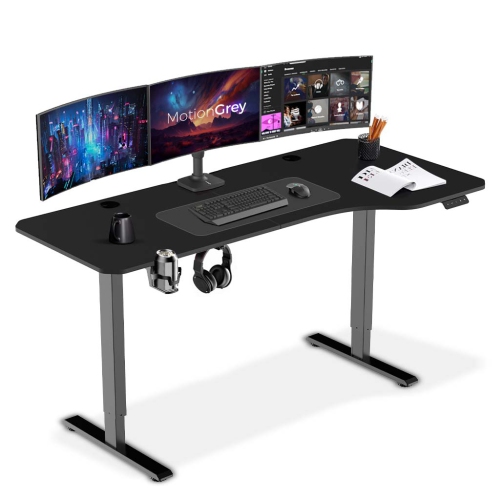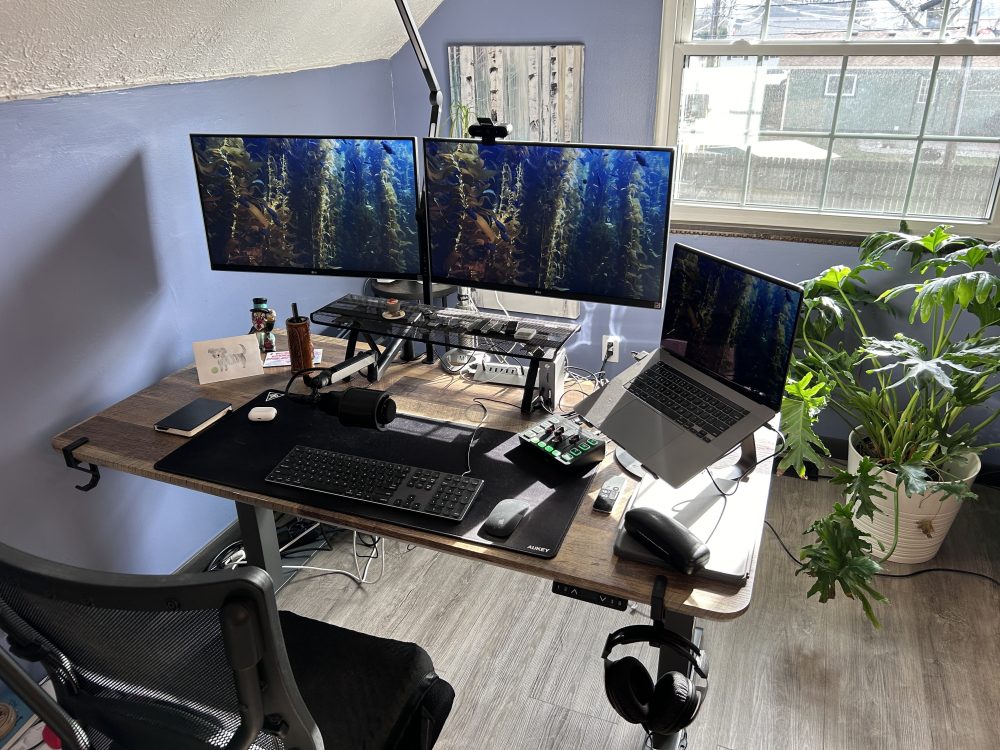Choosing the right desk for your home office can change the way you work every day. You want something that fits your space, feels comfortable, and helps you stay organized.
But with so many options out there, how do you pick the perfect one? You’ll discover simple tips to find a desk that matches your needs and boosts your productivity. Keep reading, and soon you’ll have a workspace that makes working from home easier and more enjoyable.

Credit: www.amazon.ca
Ergonomic Features To Consider
Choosing the right desk for your home office helps keep you comfortable. Ergonomic desks reduce strain and improve posture. Look for features that fit your daily work needs.
Focus on adjustability, size, and material. These factors support long hours of work without discomfort. They also help organize your workspace better.
Adjustable Height Options
An adjustable height desk lets you change the desk height to suit sitting or standing positions. This helps reduce back and neck pain. It also encourages movement throughout the day.
- Manual crank desks are budget-friendly but need effort to adjust.
- Electric desks adjust smoothly with buttons.
- Some desks have memory presets for favorite heights.
Surface Area And Shape
Surface area and shape affect how you use your desk. A bigger surface holds more items and keeps your tools within reach. The shape can improve your comfort and space use.
| Desk Shape | Best For |
| Rectangular | Simple setups with limited space |
| L-Shaped | Multiple monitors and extra workspace |
| Curved | Ergonomic reach and wrist support |
Material And Build Quality
Material affects desk durability and comfort. Solid wood and metal frames last longer. Lighter materials like MDF are easier to move but may wear faster.
Common desk materials:
- Solid wood: strong and classic look
- Metal: sturdy frame, often with adjustable parts
- MDF or particleboard: affordable, less durable
- Glass: modern style, requires careful cleaning
-ft-min.png?width=960&name=office(png)-ft-min.png)
Credit: blog.mcelherans.com
Types Of Home Office Desks
Choosing the right desk is key for a good home office. Different desks fit different needs and spaces.
Here are some common types of desks to consider for your workspace.
Standing Desks
Standing desks let you work while standing up. They can help reduce back pain and improve energy.
- Adjustable height for sitting or standing
- Electric or manual controls
- Often have a large surface area
- Good for active work habits
L-shaped Desks
L-shaped desks fit in corners and save space. They give you plenty of room for multiple tasks.
| Feature | Benefit |
| Corner design | Fits well in small rooms |
| Two connected surfaces | More space for monitors and papers |
| Can hold extra storage | Helps keep desk organized |
Compact Desks
Compact desks work well in tight spaces. They provide the basics without crowding your room.
- Small footprint for limited space
- Simple design with few extras
- Easy to move or store
- Best for light computer use or writing
Top Picks For Comfort
Choosing the right desk for your home office is key to comfort. A good desk supports your work style and fits your space.
This guide covers desks that offer comfort on any budget and in any room size.
Best Budget-friendly Desks
Affordable desks can still be comfortable and durable. Look for sturdy materials and enough surface space.
- Simple wood or metal desks with clean designs
- Desks with built-in shelves for extra storage
- Adjustable height desks that help with posture
Premium Desks With Advanced Features
High-end desks offer features that boost comfort and productivity. They often come with smart adjustments and quality finishes.
| Feature | Benefit |
| Electric height adjustment | Easy to switch between sitting and standing |
| Built-in cable management | Keeps cords organized and out of sight |
| Ergonomic design | Supports better posture and reduces strain |
| Premium materials | Durability and stylish look |
Desks For Small Spaces
Small rooms need desks that save space but stay comfortable. Compact designs and smart storage help.
Consider these ideas for small space desks:
- Wall-mounted foldable desks to free floor space
- Corner desks that use unused areas well
- Desks with drawers or shelves to keep items tidy

Credit: www.bestbuy.ca
Accessories To Enhance Comfort
Choosing the right desk is just the start for a comfy home office. Accessories make a big difference in how you feel and work.
Simple additions help reduce strain and keep your workspace neat. Here are key accessories to improve comfort.
Ergonomic Chairs
An ergonomic chair supports your back and helps keep good posture. Look for adjustable height and lumbar support.
- Adjust seat height so feet rest flat on the floor
- Choose chairs with padded armrests for elbow support
- Look for a chair that supports the natural curve of your spine
- Pick breathable material to stay cool during long work hours
Monitor Stands And Arms
Monitor stands raise your screen to eye level. This prevents neck pain and improves focus.
| Type | Benefit |
| Fixed Stand | Keeps monitor steady at a set height |
| Adjustable Arm | Move screen closer or farther easily |
| Dual Monitor Mount | Supports two screens side by side |
Cable Management Solutions
Messy cables distract and create hazards. Good cable management keeps your desk clean and safe.
- Cable clips stick to your desk and hold wires in place.
- Under-desk trays hide cables below your work surface.
- Velcro straps bundle cords to prevent tangling.
- Power strips with surge protectors keep devices safe and organized.
Tips For Setting Up Your Desk
Choosing the right desk setup helps you work better at home. A good desk space makes your tasks easier and your body comfortable.
These tips focus on where to place your desk, how to sit well, and how to light your workspace.
Optimizing Desk Placement
Place your desk near a window for fresh air and natural light. Avoid facing walls to keep the space open and less stressful.
- Keep your desk away from busy areas to reduce noise.
- Make sure you have enough room to move your chair freely.
- Position your desk so that you can easily reach power outlets.
Maintaining Good Posture
Sitting with the right posture prevents back pain and tiredness. Your chair and desk should support a straight back and relaxed shoulders.
| Posture Tip | Description |
| Chair Height | Feet flat on floor, knees at 90 degrees |
| Monitor Level | Top of screen at eye level |
| Arm Position | Elbows close to body, wrists straight |
| Back Support | Use a chair with good lower back support |
Lighting And Ambiance
Good lighting reduces eye strain and helps focus. Mix natural and artificial light for the best effect.
Consider these lighting tips:
- Use a desk lamp with adjustable brightness.
- Place lights to avoid screen glare.
- Use warm light bulbs for a calm feeling.
Frequently Asked Questions
What Size Desk Is Best For A Home Office?
Choose a desk size based on your room space and work needs. Small desks suit tight spaces, while larger desks offer more workspace and storage options.
Should I Choose A Standing Or Sitting Desk?
Standing desks improve posture and reduce sitting time. Sitting desks offer comfort for long hours. Consider a height-adjustable desk for flexibility.
What Materials Are Best For Durable Home Office Desks?
Wood offers durability and classic style. Metal frames provide sturdiness. Glass tops create a modern look but need careful maintenance.
How Much Should I Spend On A Home Office Desk?
Budget $100 to $500 depending on size, material, and features. Invest in quality for comfort and longevity without overspending.
Conclusion
Choosing the right desk can boost your home office comfort and work. Think about space, style, and how you work every day. A good desk helps keep things neat and makes work easier. Don’t rush the choice; take time to find what fits best.
Your perfect desk should support your tasks and feel right in your room. This way, you create a workspace that helps you focus and enjoy your work more.

